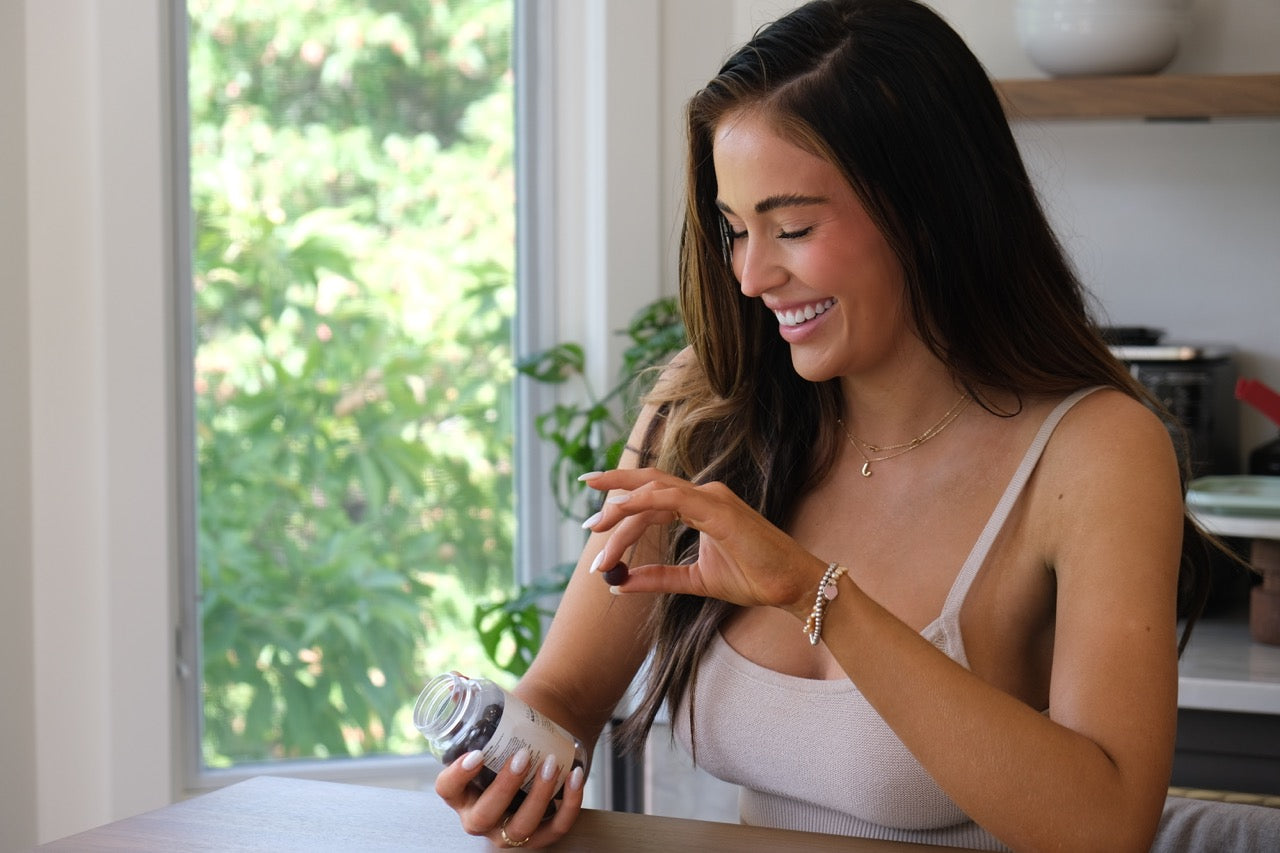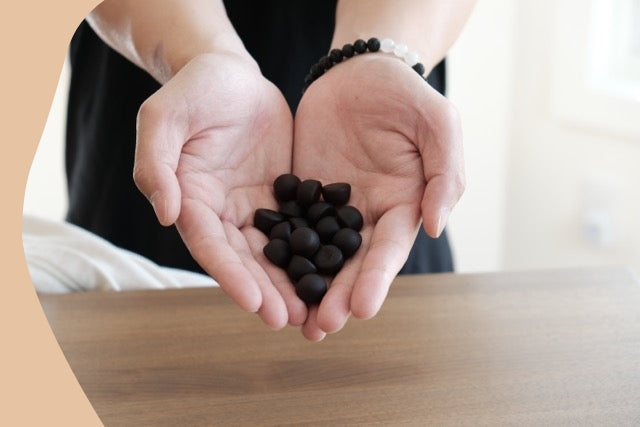
Flow & Let Go: A Yoga Practice to Activate Your Intuition
“Intuition is a very powerful thing, more powerful than intellect, in my opinion.”- Steve Jobs
If you want to become intuitive, there are three things to keep in mind.
First is that it happens with consistent daily practice. Your nervous system will begin to hold more energy and your upper chakras will begin to awaken.
Second is that you must breathe deeply each time you practice or you’ll miss out on half of the power of the yogic practice.
The third is that you must do poses that bring prana to the upper chakras where the pineal and pituitary gland are located. The pineal gland is the gateway to your third eye and you can only sense intuitively when this gland is energized with prana.
This yoga flow includes inversions that are simple enough for beginners but will work even for experienced yogis. The inversions help bring circulation and prana to the upper chakras to move the energy from the lower chakras where our energy is usually concentrated. Try doing this daily for a month and you’ll find your intuitive senses come alive. Don’t rush through the poses but move like a graceful dancer and you’ll find it also relaxes you so you can tap into your intuition.
Breathing Technique
Before you begin, try the ujjayi breathing technique so that you’re comfortable doing it as you hold a pose and as you move from one pose to the next. First, hold your hand in front of your mouth and breathe through your mouth like you are fogging up a mirror. Your breath will be hot and make a sound. Now do the same but breathe through your nose. It will sound kind of like waves crashing on the sand and you’ll constrict the back of the throat slightly to slow the passage of air through it.
This will lengthen your breath and you’ll end up breathing in more oxygen. Use this as you do all of the poses and never hold your breath but instead constantly be either breathing slowly in or slowly out. This is a big part of yoga and opening your intuition.
A Yoga Practice for Intuition
Child’s Pose (Balasana)
Begin seated on your heels and bring your knees apart. Walk your hands forward and rest your forehead on the ground. Breathe slowly and deeply in and out of your nose five times and then slowly walk your hands back towards you as you lift your torso back up.
Downward Facing Dog (Adho Mukha Svanasana)
Plant your palms on the ground directly under your shoulders and spread your fingers wide. Tuck your toes underneath you and lift your hips as you straighten your legs. Bring your feet hip-distance apart. Press your heart towards your thighs and relax your neck.
Sink your heels towards the ground as you breathe in and out of your nose slowly five times.
Standing Forward Fold (Uttanasana)
Walk your feet toward your hands and then relax in a forward bend. Keep the neck relaxed so the weight of your head lengthens your spine. Take five slow and deep breaths in and out of your nose.
Breathe in very slowly as you stand up very slowly to be sure you don’t get light-headed.
Chair Pose (Utkatasana)
With your feet still hip-distance apart, lower your hips as if you’re sitting into an invisible chair. Bring your arms straight up in line with your ears with your palms facing each other. Lift your chest and toes and sit a little deeper.
Take five slow and deep breaths while keeping your ribs pulling in by engaging your abdomen. Return to standing.
Mountain Pose (Tadasana)
Stand with your hands at your sides and your palms facing forward. Roll your shoulders up and back then down so your shoulder blades slide down your back. Bring your chin level with the floor and grow tall through the top of your head. Tuck your front ribs in and point your tailbone down.
Bring weight into your toes and then into your heels. Then find a balance point between the two. Feel your fingers energetically pulling towards the ground as you take five slow and deep breaths in this position and then relax.
Dancer’s Pose (Natarajasana)
Remain standing and slowly bend the right knee so you can grab the inside of your right foot with your right hand. Keeping your chest up begin to kick into your right hand and arch your back. Reach the left hand forward and keep a soft gaze or choose one single point to focus on.
Take five slow and deep breaths as you keep your hips level and continue to kick into your backhand to create a bow shape with your body. Slowly return to standing and repeat the same thing on the left side (you can stand by a wall to help you balance).
Pyramid Pose (Parsvottanasana)
From a standing position, step your right foot forward and turn the back foot slightly out. Place your hands on your hips and lift tall through your spine. Fold over your front leg keeping just a micro-bend to protect your knee. Reach your hands towards the grounds as you take five slow and deep breaths through your nose and try to bring both hips in line facing forward.
Slowly inhale as you lift back up and step the right foot back. Repeat the same thing on the left side.
Standing Wide-Legged Forward Fold (Prasarita Padottanasana)
Bring your legs wider than your hips with the toes turned slightly in (unless you have sciatica, keep them pointing forward). Place hands on your hips and lift the chest to elongate the spine. Lean forward and place your hands on the ground.
Take five slow and deep breaths with your neck relaxed in this position. If your hands reach the ground, walk them towards your legs to pull your torso towards closer in. To prepare for the next pose, toe-heel (move your toes in then your heels in) your feet together and then walk them back so you’re in a plank position.
Half Sleeping Pigeon (Eka Pada Rajakapotasana)
From plank position (high push up position) bring your right knee forward to your right wrist and foot towards your left hip. Lower your hips and untuck your back toe. Lean over your leg to feel the stretch in your right glute. Keep your left hip pulling forward and down to keep yourself from leaning to the right.
Keep the back leg and foot straight as you slowly take five breaths in and out of your nose. Repeat the same thing on the left side.
Reclined Twist (Supta Matsyendrasana)
Gently bring yourself to lay down on your back. Hug your right knee in toward your right armpit so you feel a slight pinch in your hip. Then bring your knee across your body to the floor so you’re on your left hip and look in the opposite direction.
Bring your arms out to a ‘T’ shape and take five slow and deep breaths before bringing your knee back to your chest, giving it one more hug in, and straightening it. Repeat the same thing on the left side.
Corpse Pose (Savasana)
Lay with your hands slightly away from your body and your palms facing up. Allow your feet to fall away from each other. Now allow each part of your body to completely relax starting from your toes and moving all the way to your head.
Relax your face. Close your eyes and allow your natural breath to return. Allow stillness and just be without needing to do anything for at least seven minutes.
Try this Next: A Root Chakra Meditation to Balance & Ground Yourself
Closing
We’ve included the Sanskrit name for the pose for two reasons. First is that if you start becoming familiar with the Sanskrit names, you’ll be able to take yoga classes when you travel more easily. You’ll notice each pose’s Sanskrit name includes ‘asana,’ this means pose. Yoga teachers are often taught to teach in their first language as well as in Sanskrit so that anyone that attends their class will know what to do. The second reason is that the word itself resonates in the part of the body that the pose activates. Seriously, try saying the word and see if you can feel where in your body there is a subtle vibration. The yogis developed the names of the poses with this vibratory awareness which is pretty cool!
Now to close this up, we just wanted to remind you that activating your intuition will allow you to live peacefully, help you see which direction is best for you, and help you find a meaningful life each and every day. There are infinite ways being intuitive can improve your work life, family life, health, and relationships. There’s a quote that you can keep in mind while practicing this sequence, “Intuition is seeing with the soul.” - Dean Koontz
This is called a practice because you’re practicing the way you move through life. When you slow your breathing, the poses give you a chance to see when you rush, if your mind is present, if you’re listening to your body, and if you’re doing things to show off, or with a deeper intention. Yoga opens your intuition in many ways. Enjoy the journey and keep in mind, if you’re injured, pregnant, or have a health condition, consult with your physician before beginning a new exercise plan.
Read this next: A Shower Meditation To Cleanse Negativity






